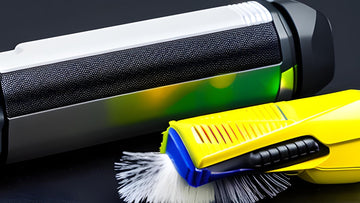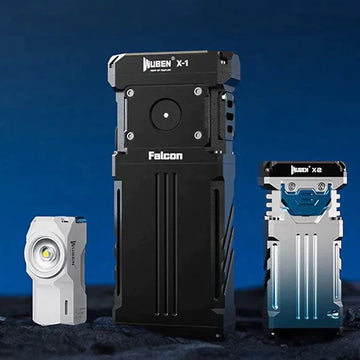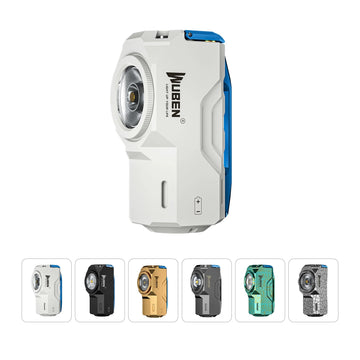
A properly functioning flashlight is a reliable companion in times of darkness or emergencies. However, battery corrosion can significantly impact its performance and reliability. This article explores the phenomenon of battery corrosion in flashlights and offers a step-by-step manual for successfully cleaning it.
Begin by turning off the flashlight and removing the batteries. This eliminates any potential electrical hazards and allows for a thorough cleaning process.
Step 2: Removing the Batteries
Check the battery compartment thoroughly for any corrosion indicators. Gently tap the flashlight to dislodge loose corrosion or debris. Use a small brush or cotton swab to remove the larger particles.
Step 3: Assessing the Extent of Corrosion
Examine the contacts and surrounding areas for the presence of corrosion. Determine the severity of the corrosion, as mild cases can often be resolved with simple cleaning methods, while extensive corrosion may require more intensive measures.
Step 4: Preparing the Cleaning Solution
Create a cleaning solution by mixing equal parts vinegar or lemon juice with water.
Step 5: Cleaning the Contacts
Dip a cotton swab or soft cloth into the cleaning solution and gently scrub the battery contacts and surrounding areas. Ensure thorough coverage of all corroded surfaces. The acidic properties of vinegar or lemon juice help dissolve the corrosion, facilitating its removal.
Use a tiny brush or an old toothbrush soaked in the cleaning solution for tough or difficult-to-reach places. Avoid applying too much pressure to avoid damaging the flashlight's delicate parts.
Step 6: Drying and Reassembling the Flashlight
After cleaning, use a dry cloth or paper towel to wipe away any remaining moisture from the contacts and battery compartment. Before putting the flashlight back together, let it thoroughly dry out in the air.
Once the flashlight is dry, carefully insert fresh batteries, ensuring proper polarity alignment. Securely close the battery compartment to prevent moisture ingress. Turn on the flashlight to test its functionality. If it turns on and operates smoothly, you have successfully cleaned the battery corrosion.
Use Quality Batteries: Opt for high-quality batteries from reputable brands that are less prone to leakage or corrosion. Avoid mixing different battery types or using old and new batteries together.
Store Flashlights Properly: When not in use, remove the batteries from the flashlight to prevent corrosion. Store the flashlight and batteries in a dry and cool environment, away from moisture or extreme temperatures.
Regular Maintenance and Inspection: Incorporate periodic maintenance checks into your routine. Check the battery contacts and the flashlight for any signs of rust or damage. Clean the contacts as needed and replace batteries if necessary.
Properly maintaining your flashlight is essential for its reliable performance when you need it most. Battery corrosion can impair the functionality of your flashlight, but with the right knowledge and cleaning techniques, it can be effectively addressed. You may safely clean battery corrosion in your flashlight by following the offered step-by-step guide, extending the life and dependable performance of your flashlight.
Remember to prioritize safety during the cleaning process and utilize the appropriate tools and materials. Implement preventive measures, such as using quality batteries and proper storage practices, to minimize the occurrence of battery corrosion. Regular maintenance and inspection will further contribute to the optimal functioning of your flashlight, making it a trustworthy companion in various situations.
That's all, maintain your flashlight's health, and it will continue to illuminate your way when darkness falls.
Understanding Battery Corrosion
Battery corrosion occurs when the chemicals inside batteries react with the metal contacts over time. This chemical reaction often results from the gradual leakage of battery electrolytes or exposure to moisture. The presence of corrosion can hinder the flow of electricity between the batteries and the flashlight, leading to poor performance or complete failure.Signs of Battery Corrosion
Identifying battery corrosion is crucial for timely intervention. Some common signs include a white or greenish powdery substance around the battery contacts or inside the battery compartment. Additionally, if you notice dim or flickering light, inconsistent performance, or difficulty turning the flashlight on or off, it may be indicative of battery corrosion.Dangers of Battery Corrosion
Battery corrosion not only affects the performance of your flashlight but also poses potential risks. Corrosion can spread to other components of the flashlight, causing further damage or rendering it unusable. Moreover, if the corroded batteries leak, they may release harmful chemicals, posing a risk to your health or damaging the environment.Precautions and Safety Measures
Prioritizing safety before beginning the cleaning process is essential. Firstly, ensure that the flashlight is turned off and remove any batteries to prevent electrical mishaps. Wear protective gloves and eyewear to shield yourself from any corrosive materials. Additionally, gather the necessary tools and materials, including vinegar or lemon juice, cotton swabs or soft cloth, and a small brush.Step-by-Step Guide: Cleaning Battery Corrosion
Step 1: Safety FirstBegin by turning off the flashlight and removing the batteries. This eliminates any potential electrical hazards and allows for a thorough cleaning process.
Step 2: Removing the Batteries
Check the battery compartment thoroughly for any corrosion indicators. Gently tap the flashlight to dislodge loose corrosion or debris. Use a small brush or cotton swab to remove the larger particles.
Step 3: Assessing the Extent of Corrosion
Examine the contacts and surrounding areas for the presence of corrosion. Determine the severity of the corrosion, as mild cases can often be resolved with simple cleaning methods, while extensive corrosion may require more intensive measures.
Step 4: Preparing the Cleaning Solution
Create a cleaning solution by mixing equal parts vinegar or lemon juice with water.
Step 5: Cleaning the Contacts
Dip a cotton swab or soft cloth into the cleaning solution and gently scrub the battery contacts and surrounding areas. Ensure thorough coverage of all corroded surfaces. The acidic properties of vinegar or lemon juice help dissolve the corrosion, facilitating its removal.
Use a tiny brush or an old toothbrush soaked in the cleaning solution for tough or difficult-to-reach places. Avoid applying too much pressure to avoid damaging the flashlight's delicate parts.
Step 6: Drying and Reassembling the Flashlight
After cleaning, use a dry cloth or paper towel to wipe away any remaining moisture from the contacts and battery compartment. Before putting the flashlight back together, let it thoroughly dry out in the air.
Once the flashlight is dry, carefully insert fresh batteries, ensuring proper polarity alignment. Securely close the battery compartment to prevent moisture ingress. Turn on the flashlight to test its functionality. If it turns on and operates smoothly, you have successfully cleaned the battery corrosion.
Preventive Measures
To minimize the occurrence of battery corrosion in your flashlight, it is essential to implement preventive measures:Use Quality Batteries: Opt for high-quality batteries from reputable brands that are less prone to leakage or corrosion. Avoid mixing different battery types or using old and new batteries together.
Store Flashlights Properly: When not in use, remove the batteries from the flashlight to prevent corrosion. Store the flashlight and batteries in a dry and cool environment, away from moisture or extreme temperatures.
Regular Maintenance and Inspection: Incorporate periodic maintenance checks into your routine. Check the battery contacts and the flashlight for any signs of rust or damage. Clean the contacts as needed and replace batteries if necessary.
Properly maintaining your flashlight is essential for its reliable performance when you need it most. Battery corrosion can impair the functionality of your flashlight, but with the right knowledge and cleaning techniques, it can be effectively addressed. You may safely clean battery corrosion in your flashlight by following the offered step-by-step guide, extending the life and dependable performance of your flashlight.
Remember to prioritize safety during the cleaning process and utilize the appropriate tools and materials. Implement preventive measures, such as using quality batteries and proper storage practices, to minimize the occurrence of battery corrosion. Regular maintenance and inspection will further contribute to the optimal functioning of your flashlight, making it a trustworthy companion in various situations.
That's all, maintain your flashlight's health, and it will continue to illuminate your way when darkness falls.
Related Articles


